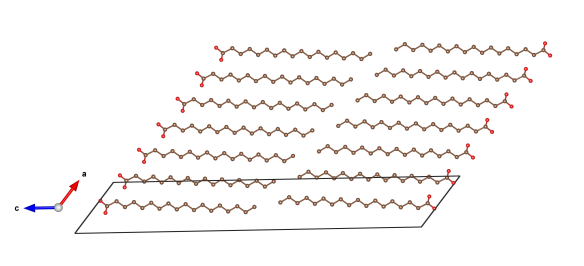Time to scrub things up – Stearic acid
Today's crystal structure is our 200th post! Quite a milestone, but still 167 crystal structures to go. We thought we'd feature one of the most important materials that we use every day – soap!
What does it look like?

Image generated by the VESTA (Visualisation for Electronic and STructural analysis) software http://jp-minerals.org/vesta/en/
What is it?

This is stearic acid, a molecule that is made up of a long chain of 18 carbon atoms capped with an oxygen and hydroxyl group. This makes for a waxy solid, which is found in nearly all animal and vegetable fats.
Stearic acid is also a key ingredient in soap, helping it to hold its shape. But it can also, as a surfactant, work as a cleanser too – grabbing on to the dirt on your skin.
Where did the structure come from?
Stearic acid comes in a number of different forms (or polymorphs). We've chosen to feature the C form of this material which was found by Malta et al. in 1971. This structure was determined with laboratory X-ray diffraction data, so only the carbon and oxygen positions were found.






